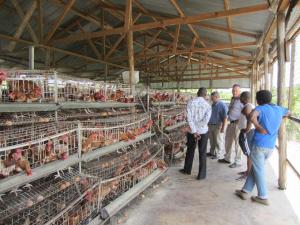The U.S. Grains Council will launch the Food for Progress Tanzania Program this spring with an eye toward sustainably enhancing the capacity of poultry production and feed milling industries in Tanzania.
The aim is to streamline understanding and cooperation among government officials, feed manufacturers and poultry producers.
The centerpiece of the project is the government feed quality laboratory. The project goal is for the feed lab to be fully-functional at the end of four years, with proper equipment and trained staff, and institutional support from the Ministry of Livestock and Fisheries to ensure on-going access to utilities, equipment, materials and staff training.
“This project doesn’t only include exposure to information and training from U.S. and African industry specialists,” said Cary Sifferath, USGC regional director for the Middle East and Africa. “We’re going to help Tanzanian poultry producers and feed millers develop business plans that establish the profitability, viability and sustainability of these changes.”
Another major piece of the puzzle is working with the Tanzania Poultry Breeders Association and Tanzania Feed Manufacturers Association to build-up their capacity to work with the government to better serve their industry.
“We’d like to have these associations be self-sustaining so they can always continue training, relationship building and pushing the industry to require quality tested feed,” Sifferath said.
The Tanzania program will identify and nurture leaders; instill the vision and skills to make good business plans; build institutions; increase awareness of and commitment to industry cooperation; improve business practices; and advocate appropriate government polies and regulations to allow the poultry industry to flourish.
The following four outcomes are keys to overall success:
- A self-sustaining feed quality lab that feed millers use to test the quality of feed and ingredients
- Effective feed industry marketing programs to teach poultry producers about the advantages of quality feed and to provide training about other facets of poultry production
- Viable poultry producer association and feed manufacturer association that are effective in promoting government policies and regulations and providing members with information to improve efficiency and profitability
- Increased consumer confidence in the safety and quality of poultry leading to increased consumption and expanded local production
“We have ambitious initiatives on several fronts,” Sifferath said. “All stakeholders understand the importance and with strong initial investment, we’ll see it come to fruition.”

